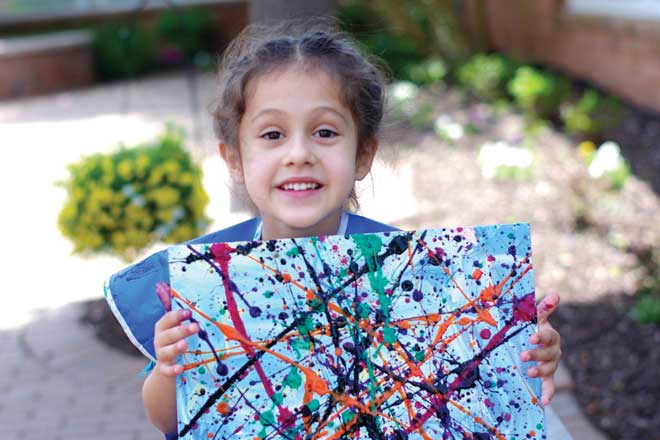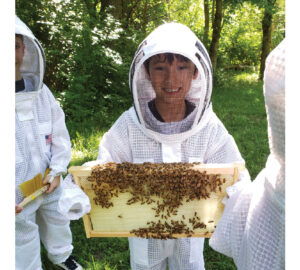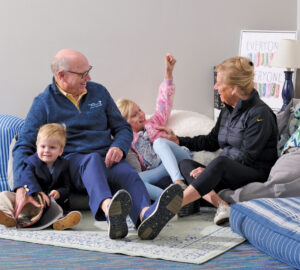What do you see? What do you think? What do you wonder? Rossman School art teacher Erica Spangler asks her students these questions whenever they look at artwork together. “Each question requires a deeper level of thinking, and each requires students to observe, support their opinions and express their thoughts articulately,” she says.
Rossman School, founded in 1917, is committed to helping students from pre-kindergarten through sixth grade reach their full potential. Art is essential to that process, Spangler notes. “It helps little ones identify shapes and colors and develop fine motor and language skills, and it teaches older students to think critically and communicate their ideas. And all ages benefit from learning the patience needed to complete a project.”
Studies link participation in fine arts to improved academic performance across the curriculum, and show that integrating the arts with other subjects can raise achievement levels, Spangler adds. Arts education pays off in the working world, as well: “Fortune 500 companies are looking for inventive employees who can think in new ways and solve problems creatively—traits developed through participating in the arts,” she says.
Rossman’s Lafayette Square Homes Project is an annual event. “Every year, we take the fourth graders to Lafayette Square, where they each choose a house, take a photo of it, make a sketch, and use it as the basis for a watercolor painting,” Spangler explains. “In homeroom, they write essays on what makes that house special.” The paintings and essays are hung in the halls, and posters featuring miniatures of each painting are sold to raise funds for the school.
It’s just one of many cross-curricular art assignments at Rossman, where art and music are taught twice a week. Students also write essays on how their heroes embody the ‘Rossman Rules’ of honesty, kindness, respect and responsibility, and then decorate a place setting for each hero. This year, third grade science students will build a simple machine, visually documenting each step of the process. And sixth graders studying Egypt in social studies will create an art project featuring hieroglyphics.
“Every child is an artist,” Spangler says. “Some have more inborn talent than others, but everyone can have fun with it. And doing something you’re not naturally gifted at shows you it’s OK to take risks.” Last year, one little girl looked at the photo of her chosen Lafayette Square house in despair. “How am I ever going to paint a picture that looks like this?” she asked. Spangler advised her to take it one small step at a time, and gave her plenty of help along the way. “Not only was it one of the best paintings in the class,” Spangler recalls, “but the look of pride on her face lit up the entire classroom. By creating artworks they never dreamed possible, Rossman students learn they can accomplish anything if they try. They carry that self-confidence with them the rest of their lives.”
Photo Courtesy of Rossman School
Pictured: A Rossman School junior kindergartner with her version of a Jackson Pollock painting
[Rossman School, for students from junior kindergarten through sixth grade, is located at 12660 Conway Road in Creve Coeur. The school holds open houses Oct. 18 and 22. For more information, call 314.434.5877, or visit rossmanschool.org.]








